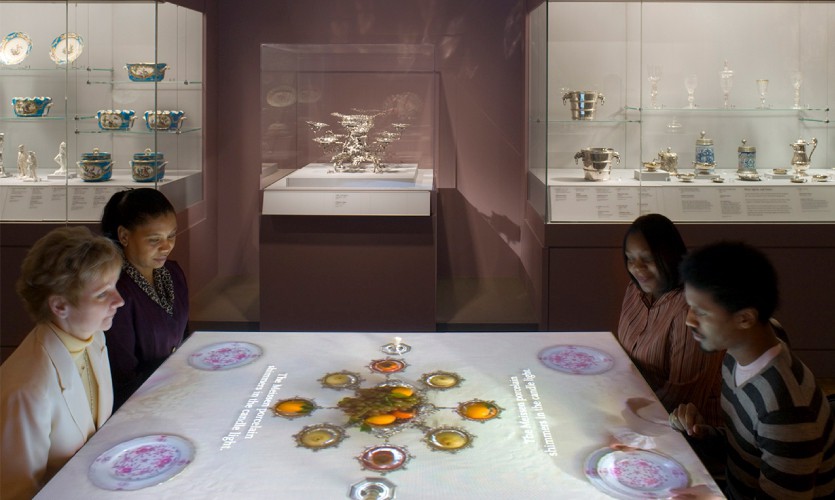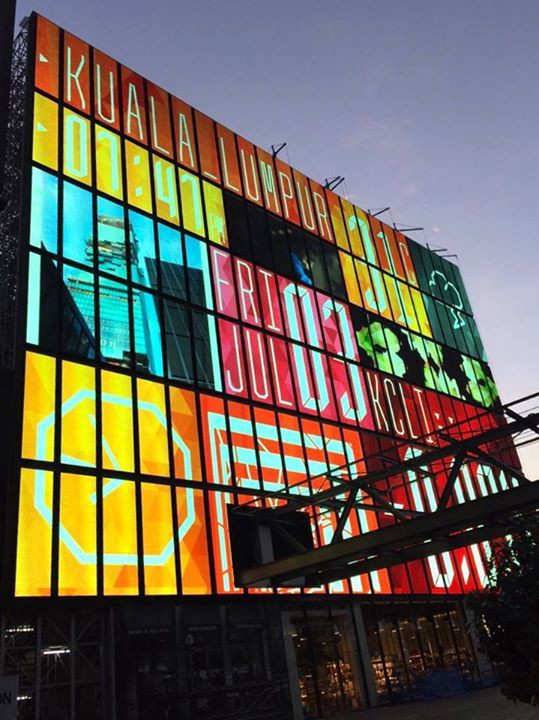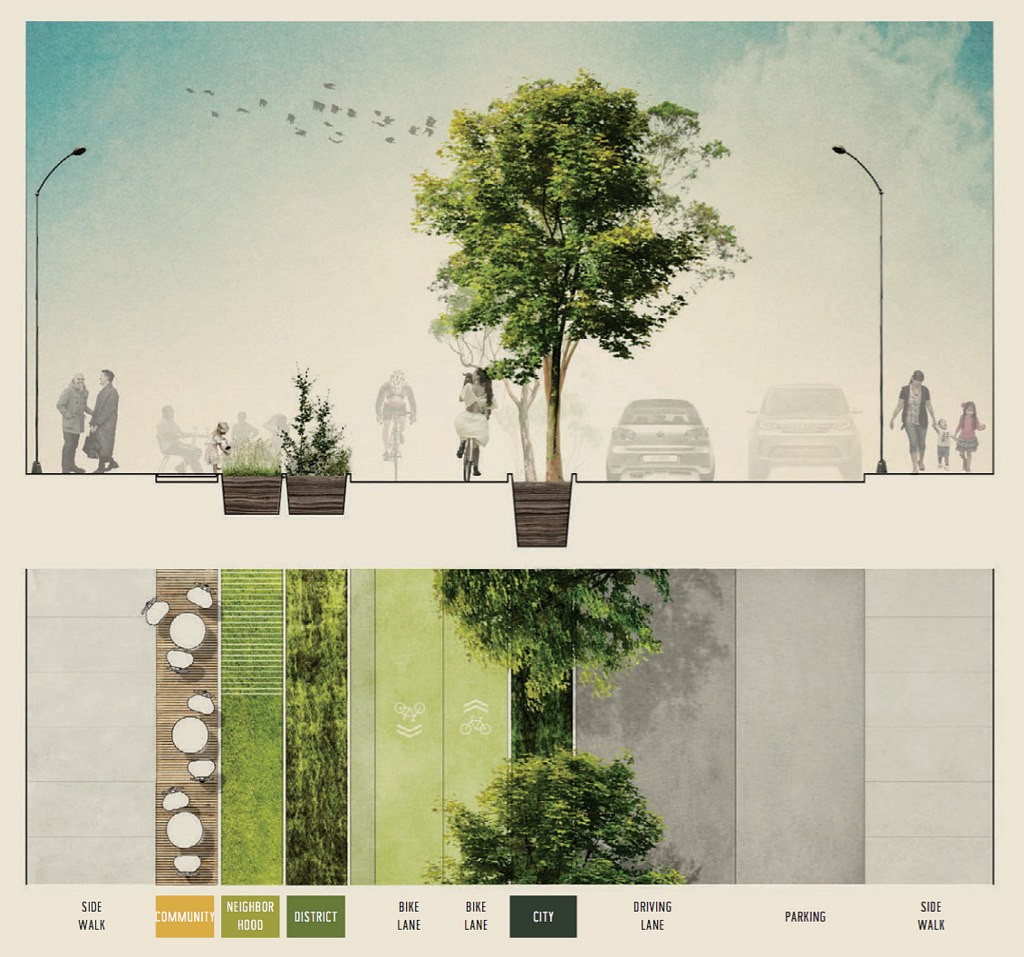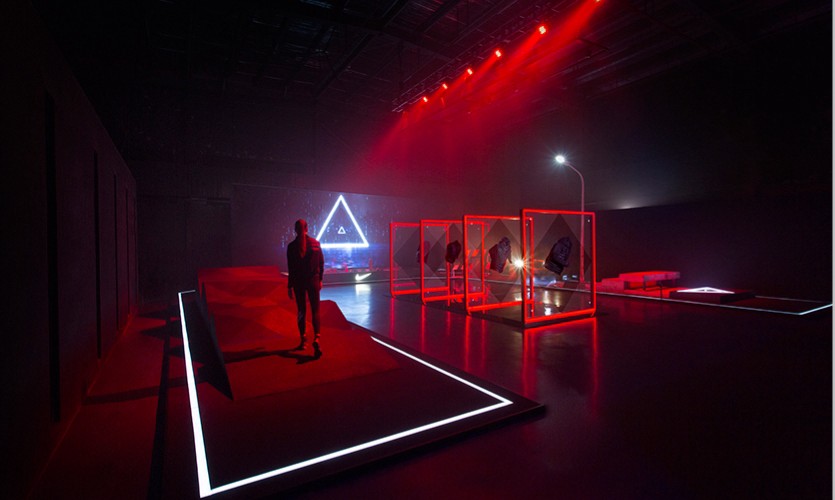Several years ago while doing some freelance work with a small school district, I was asked to design a set of brochures for an event that would explore the roles of architecture, urban planning, and education in the built environment. It was a one day workshop, provided to the school’s teaching staff, and designed to help expand their horizons on what environmental design and education could be. As a perk for designing the materials I was invited to attend the event.
In all honesty, much of what I learned that day ended up falling far short of my attention threshold and quickly dropped off into the black void of nothingness. Yet, there was one talk given by an architect (whose name completely alludes me at this point) in which he described a future in which he believed technology would converge with the built environment. He described the process in terms of how technology would be “baked in” to the surrounding environment and how we, as its inhabitants, would benefit from this on both an educational and personal level. It was inspiring despite seeming, at the time, a bit far fetched and even farther off.
Wink wink, nudge nudge, and welcome to the future
The role of technology, design, and the built environment has become, as my unfortunately nameless architect had predicted, a persistent presence in our everyday lives. As we move through cities and spaces we have become connected to our surrounding environments through a myriad of intermingling, interactive technologies. Multi-story interactive displays, digital way finding systems, and various physical and digital helper applications provide an interactive touch point between the environment and us, its ever curious denizens. Design has grown up around us — establishing itself as a strong influence in our lives and embedding itself into the technology of the places we mingle and co-habitate.
Interactive components are not a requisite for environmental or experiential design. Traditional design applications can greatly enhance the built environments around us.
The breed of egalitarian designer who experiments in the spaces that surround us practices experiential graphic design (EGD), specifically as it relates to the betterment (enhancement) of the environmental space. They work from a base set of beliefs, not wholly unlike the architectural design values of re-use and modification in which existing buildings can be continuously used through updates over time. Combining and infusing graphic design, storytelling, and technology into existing spaces is at the core of their work. The goal being to create rich experiences tied to a physical location. The benefit of these types of experiences being that they connect us to our environment in a way previously unavailable thorough more uni-directional communication methods.

Science Storms was a ground-breaking 26,000-sq.-ft. exhibition in Detroit, MI. Visitors were able to interact with dynamic, large-scale experiments that explored nature’s most powerful phenomena.
Architecture defines how a physical space unfolds. It’s design massages the flow of traffic thorough out the space. EGD augments this, reinforcing the architectural intentions of that space by weaving narrative, design, and interactivity throughout. It’s a process that encourages surprise and delight and enhances informational discovery and learning.
Museums have been bravely exploring these frontiers for years. The complete transformation of space into a thematic, educational narrative is what makes exhibits on subjects like dinosaurs, cavemen, and space travel so compelling. Museums have long understood the benefit of weaving design and technology into the built space as a tool for education and learning.
Environmental graphic design, a synonym of experiential design, does not always mean the inclusion of technology as a requisite for a designed space. Traditional graphic design, interior design, landscape design, and architectural design all play key roles in creating engaging environments, but the inclusion of interactivity through technological means rallies the imagination, securing the attention of the public, and cementing cognitive memory that is tied to physical location.

The MahaNakhon CUBE in Bangkok, Thailand was designed to be a six story interactive experience.
Take for instance the work that Pentagram Design and Eddie Opara have done on the MahaNakhon CUBE in Bangkok, Thailand. The building itself is a testament to the art and craft of architecture. But take that visceral architectural experience and extend it through a series of interactive displays spanning six stories, where interactivity is in the hands of the public, and you have something that begs for attention. Connectivity on that scale creates instant memories and a stronger bond between people and place.
Opara and his team managed to infuse technology into a large, architecturally rich space in a way that provides benefits to the public through beautiful design and immersive interactivity. A subject he talks about in more detail during his 2015 AIGA keynote presentation.

Untitled Studio’s plan for the PDX Green Loop is a strong example of how design enhances the built space.
We don’t have to travel all the way to Thailand to see the benefits of design in the built space. Closer to our own backyards we have the PDX Green Loop project that is just getting underway. This six mile long walkable, rideable loop promises to be a space designed to foster connection between the city of Portland and her citizens. How will they establish that connection? Design is surely to be at the heart of the process.
For last year’s Design Week Portland event the organizers put out an open call competition to explore that very topic. By asking questions like how should it look and feel? And how would it fit into, describe, exemplify, enhance the way Portlanders experience their city? DWP was able to give participants a prompt that necessitated the inclusion of design into their moonshot-like proposals. The winning idea, submitted by Portland’s Untitled Studio, is a true testament to design thinking and experiential graphic design.
Untitled Studio’s solution, while largely analog in nature, has at its heart the principles of environmental design, way finding, and a respect for the generational demographics that would inhabit this space. Their approach supported experimentation and fostered surprise and delight within the space. If you have time, DWP published an article that goes into their solution in-depth.

The Nike Leviathan event was an interactive obstacle course designed to show influencers and athletes the latest in Nike athletic gear and its capabilities.
The examples of how design and technology are being integrated into the spaces surrounding us are numerous and on the rise. The benefits and impact of these immersive, interactive environments are numerous, but at the forefront is how design promotes within us a desire to be curious, to share that curiosity with others, and the propensity to develop deep connections with the spaces and places around us.
Design is playing roles in our lives that few would have ever guessed at just a few years ago. The built environment and its intermingling with the design disciplines plus the infusion of technology create a holistic symbiosis that we, the public, are the proud beneficiaries of.
– – –
 Erin Lynch is a designer, writer, and educator living in Vancouver, WA. He owns the design studio, Shop, and is an editor at The Portland Egotist. Reach out and make friends on Twitter: @erinlynch.
Erin Lynch is a designer, writer, and educator living in Vancouver, WA. He owns the design studio, Shop, and is an editor at The Portland Egotist. Reach out and make friends on Twitter: @erinlynch.